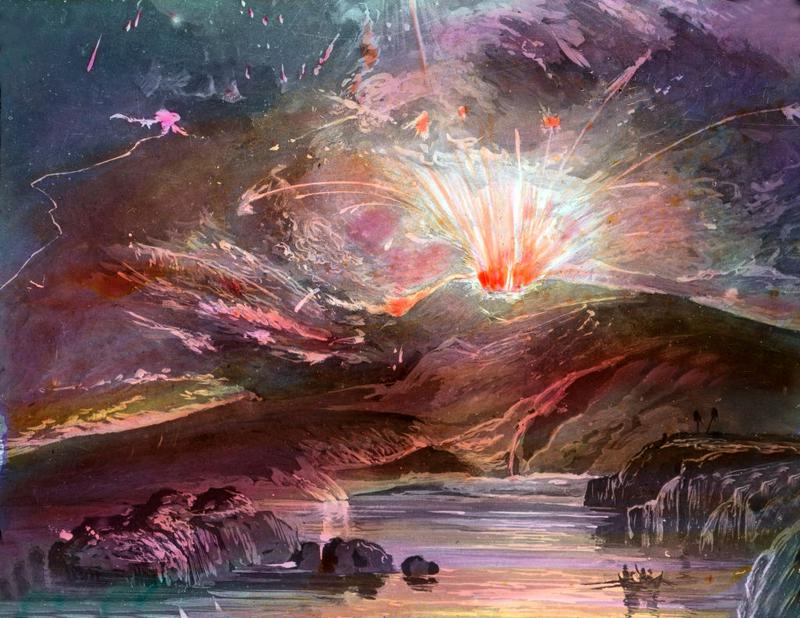1902 Mount Pelée Eruption: Volcano Kills 30,000 When Governor Decides Election Is More Important
By | November 7, 2020

Several months ago, when postponing the U.S. presidential election to prevent the spread of COVID-19 was on the table, the very idea caused such an outcry that it was abandoned, but the suggestion wasn't unprecedented. More than a century ago, government officials in the West Indies refused to issue evacuation orders because of an election, which ended pretty badly. Specifically, it ended with the 1902 Mount Pelée eruption, killing everyone in town.
The Paris Of The Caribbean
St. Pierre, a picturesque town on the French island of Martinique in the Caribbean, was a harbor town, center of trade, and cultural mecca of the region. As a stunning backdrop to the beautiful city, Mount Pelée soared nearly 4,600 feet above the sea. The mountain boasted brilliant green slopes with occasional deep canyons, perfect for hikers and adventurers.
Mount Pelée may have added to the splendor of St. Pierre, but beneath its mighty peak lay a hidden danger. The people of St. Pierre knew that, like most mountains in the Lesser Antilles, Mount Pelée was a volcano, but they treated it as a sleeping giant that posed no threat to them.

The Awakening
Although Mount Pelée appeared dormant, beneath the surface, the volcano was waking up. It's not like it had no history of activity, some of which was fairly recent. In 1792, Mount Pelée sent a fine layer of ash over a portion of Martinique. Sixty years later, the mountain sputtered ominously, although the only damage was caused by a few small mudslides. The people of St. Pierre believed that if their mountain erupted again, it would be another minor incident.
A number of strange things happened in 1902, however, that we now know were warning signs that Mount Pelée was roaring back to life. Waves of ants, spiders, and centipedes swarmed down the mountain and overran the farm fields at its base. Next, hundreds of pit vipers invaded St. Pierre, fleeing the mountain. Hikers returned with reports of a slight smell of sulfur, and by April 1902, the mountain rumbled with tremors and sent down mud flows that killed a few farmers. An underwater telegraph cable running from Martinique to the nearby island of Dominica mysteriously ruptured, but no one connected it to the tremors from Mount Pelée.

Elections And Eruptions
In the evening of May 2, 1902, Mount Pelée let off some steam. The small eruption caught the attention of the people of St. Pierre, who glimpsed glowing rocks and embers shooting from the summit of the volcano all night long, and when dawn broke, they were stunned to find hundreds of dead birds littering the ground, covered in heavy ash. City officials in St. Pierre hastily met to discuss the situation because there was, in fact, a situation to discuss beyond "Let's get out of here, shall we?"
Any other time, that would have been a no-brainer, but a major election was scheduled for May 11, just a few days away. The socialist party of Martinique was poised to seize power from the conservatives, but St. Pierre had a large number of conservative voters, and the governor wanted those votes. Surely, the municipal leaders thought, Mount Pelée did not pose enough of a threat to postpone the election, so no evacuation orders were issued.

Bad Call
Around 8:00 A.M. on May 8, 1902, Mount Pelée blew a big one. A huge cloud of superheated gas, called a pyroclastic flow, spewed from the summit of the volcano and raced down its slopes at speeds exceeding 100 miles per hour. It took less than two minutes for it to hit St. Pierre. In just a few more minutes, more than 30,000 people were dead, nearly the whole town. Only one person survived the 1902 Mount Pelée eruption: Auguste Ciparis, a 25-year-old death row inmate who was confined to the dungeon of the city's jail. His sentence was later commuted, and he went on to tour with the Barnum and Bailey Circus, so the whole situation was a mixed blessing for him, to be sure.
The 1902 Mount Pelée eruption wasn't the worst in history—the 1815 eruption of Tambora claimed the lives of 92,000 people, and Krakatoa in 1883 killed about 36,000—but it was unique in that every death it caused was the direct result of the eruption. It was also the first time a pyroclastic flow was observed in real time, as it was witnessed by numerous people on boats in the harbor. Their descriptions helped scientists to better understand this strange volcanic phenomenon.

